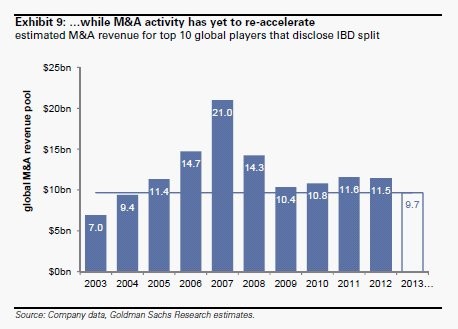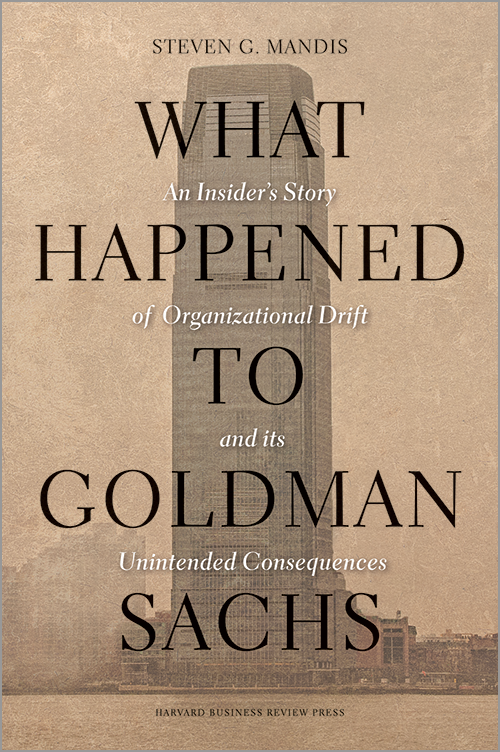The Evolution Of Goldman Sachs
Post on: 22 Июнь, 2015 No Comment

With the ongoing cases against Goldman Sachs (NYSE:GS ), a lot of sound bites have been focused on the firm losing its way and tarnishing its traditional values. Since much is being made of these good old days, it’s worth looking back at how exactly Goldman Sachs went from being a specialist in commercial paper to the expediter of speculative investors’ dreams. (Despite the airtime this scandal has received, the details aren’t clear. Find out what happened and how it affects you in The Goldman Sachs Fraud Explained .)
Goldman, Sachs & Co.
In 1848, Marcus Goldman left a teaching job in Bavaria to start again in America. He worked as a shopkeeper for years before settling in New York and starting a new business of trading in commercial paper in 1869. Basically, Goldman helped other small businesses secure short-term capital. He would connect investors (often banks) and entrepreneurs, shaving off a slight profit for himself in the deal. As his reputation as a broker in short-term credit grew, more and more businesses came to him with their funding needs. Business was thriving when Goldman’s son-in-law, Samuel Sachs, joined the firm in 1882.
Finding A Niche
Although still one of the smaller firms, the renamed Goldman, Sachs & Co. expanded into other areas of business outside of commercial paper. The company handled overseas transactions of both debt and currency. getting an early start in currency arbitrage. and made inroads against more established investment banks by handling the accounts for Sears Roebuck and other non-railroad companies. Goldman, Sachs & Co. helped several of those companies, including Sears Roebuck, through their IPO. The company demanded stricter reporting to make these non-industrial stocks attractive. Goldman was one of the first investment banks to advise clients to use capital to buy back shares whenever the price was undervalued.
The Crash
The founders passed Goldman, Sachs & Co. onto the next generation at the turn of the century. The roaring ’20s were great for the company and its new subsidiary Goldman Sachs Trading Corporation. Unfortunately, the new subsidiary was nearly wiped out in the crash, but the core businesses of investment banking services and the original commercial paper brokerage helped the company recover.
During the Great Depression. Sidney J. Weinberg became the first non-family member to hold a position of power in the firm. (While Goldman’s guilt or innocence is not yet clear, these key numbers help tell part of the story. Don’t miss Goldman Sachs: By The Numbers .)
Government Sachs
Weinberg and other outsiders drove Goldman’s expansion after the Crash. Under Weinberg, Goldman expanded into arbitrage for securities and currencies. Goldman also began its close relationship with the government, helping to secure financing for WWII and the Korean War. Goldman was no longer a small bank looking for a niche. By the 1950s, Goldman enjoyed close relations with the government and had choice IPO clients like Ford.
Leveraging Up
Already hugely profitable and well-diversified, Goldman added commodities trading to its portfolio by buying out J. Aron & Company. The company also bought up overseas banks and created new partnerships to expand its international operations. Goldman began spinning off certain operations to minimize some of the risks of its speculation while still garnering the profits. At the beginning of the ’90s, Goldman recorded record-breaking profits year after year thanks to operations that covered everything from offering Japanese equities to the U.S. to bankruptcy turnarounds. If there was profit to match the risk, Goldman was there.
Public Life
Goldman was surprisingly inactive during the LBO craze of the 1980s, but it made up for it in the 1990s. Goldman purchased several asset management firms to shore up its neglected financial services side. This return to the investment banking side of the business helped give the company some balance — the trading profits at Goldman were often enormous, but even relatively minor market blips hurt the company far more than its peers.
Goldman changed its corporate structure in 1996 to clear the way for going public in 1999, immediately becoming one of the largest financial services firms around. It used the capital to do another $7 billion in M&A. including the purchase of a market maker. The end result was that Goldman was one of the largest market makers, IPO underwriters and M&A advisors, along with the still profitable trading arm.

The Big Get Bigger
Other firms like Citigroup also began to mega-size in the new millennium, but Goldman definitely had an edge in prestige on most firms without Morgan in their name. During this unprecedented growth spurt, the connection between Goldman and the government remained strong as former Goldman employees even went on to top government positions (Henry Paulson’s ears are burning). (If you have you ever seen a cockroach in the kitchen, you know there are more. The same concept applies to bad financial news. Find out more in Are There More Cockroaches In Goldman’s Kitchen? )
The Fall
And here we are. In the 2007-2009 market meltdown, Goldman’s diversified businesses bit the hand that fed — at least, politically. Although Goldman’s trading arm kept the firm from heavier losses by shorting the market, the firms other business were marketing investments at the same time. Both were doing their job, but in the eyes of congress and the public, this seems like a clear conflict of interest.
In hindsight, it’s easy to say that a trading arm and a broker specializing in exotic investments should not be under the same roof because we can’t be sure what information was been passed between. Was the number of hedge funds requesting bearish synthetic CDOs a tip-off to the trading arm to start shorting? We may never know. No doubt the financial reform will layer on regulations pertaining to this exact situation, along with a healthy coat of disclosure requirements. (Warren Buffett claims that understanding these instruments would mean reading 750,000 pages of text. Read on to learn the basics in Down The Rabbit Hole: Deciphering CDOs .)
The Bottom Line
Goldman came into its current mess by honest means. Over its long history, the company simply wanted to grow and profit — and its crime seems to be its success. The size and scope of Goldman’s operations as a market marker, broker in exotic derivatives and a trader have allowed the firm to profit, but it has also given congress the seemingly moral high-ground to cry foul and accuse the firm of double dealing. Whether this is justified or not, is another matter.
Feeling uninformed? Check out the financial news highlights in Water Cooler Finance: Greece Is Burning And Buffett’s Under Fire .














